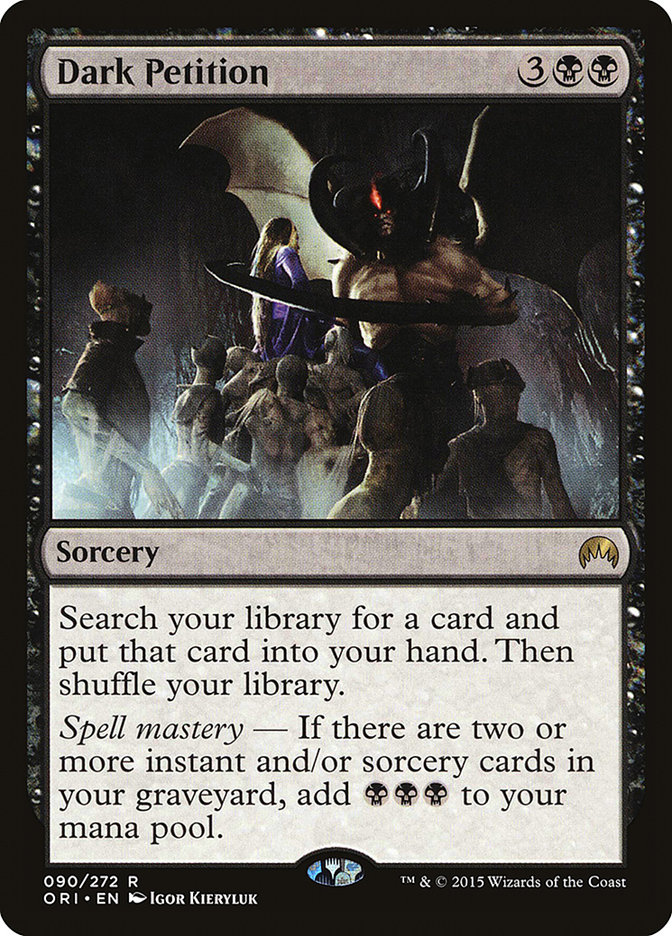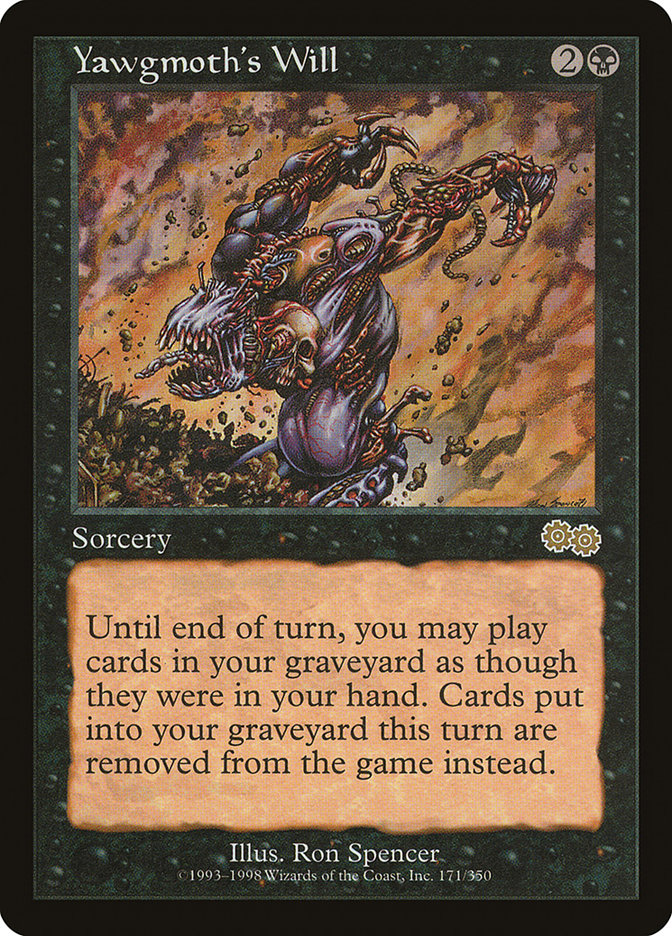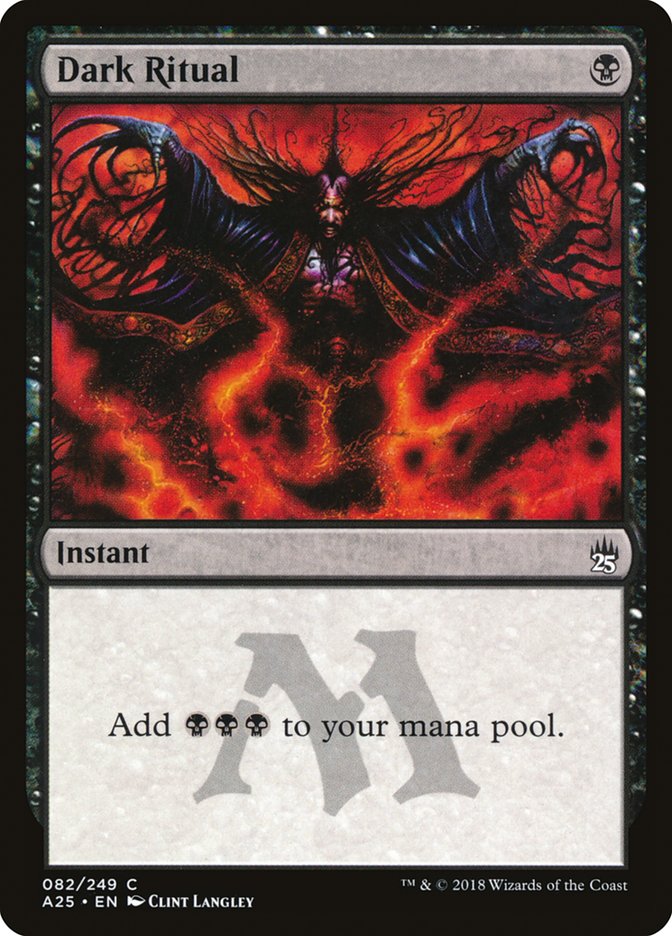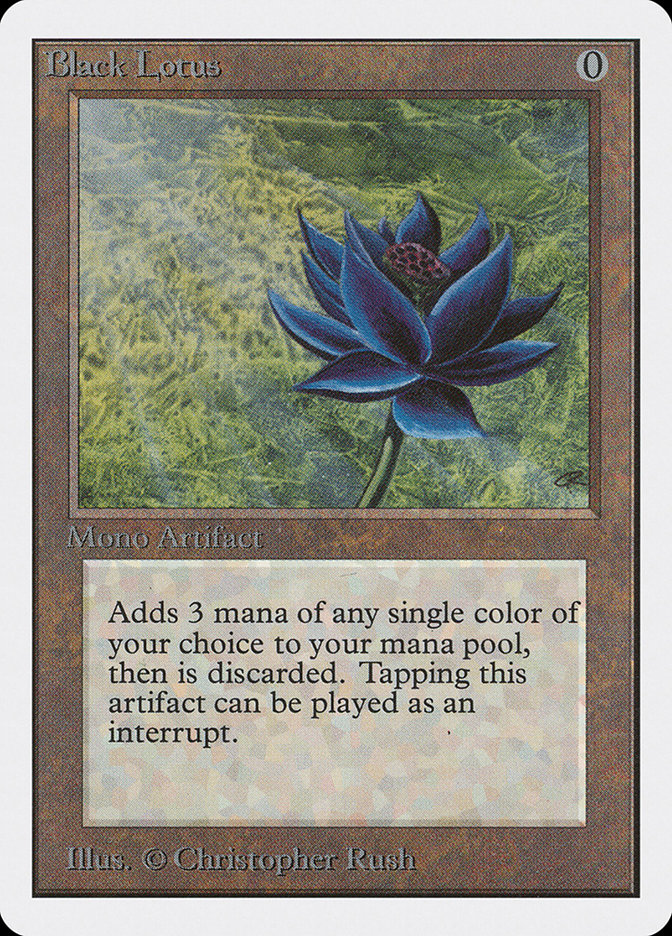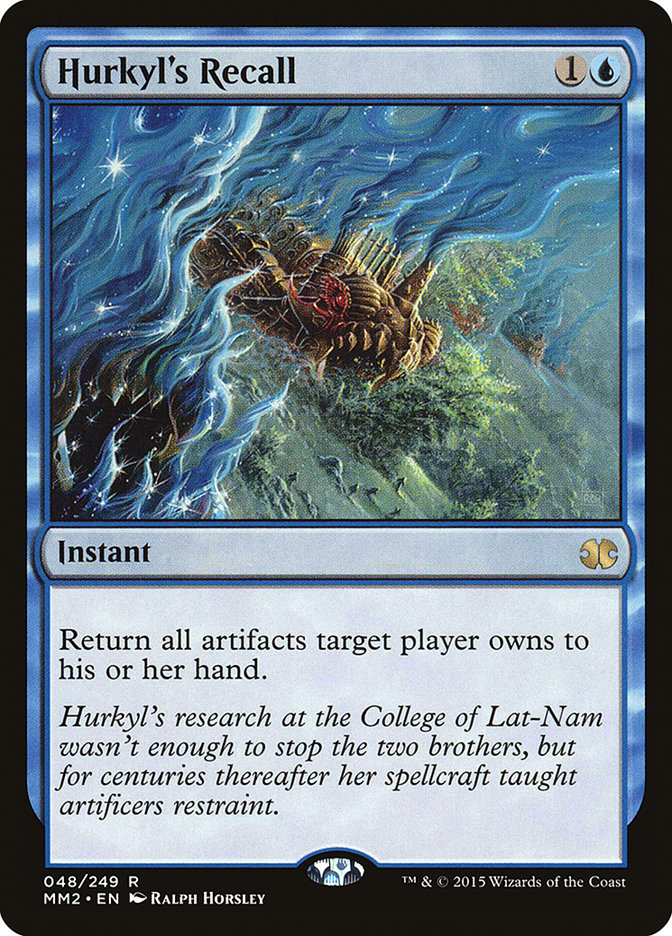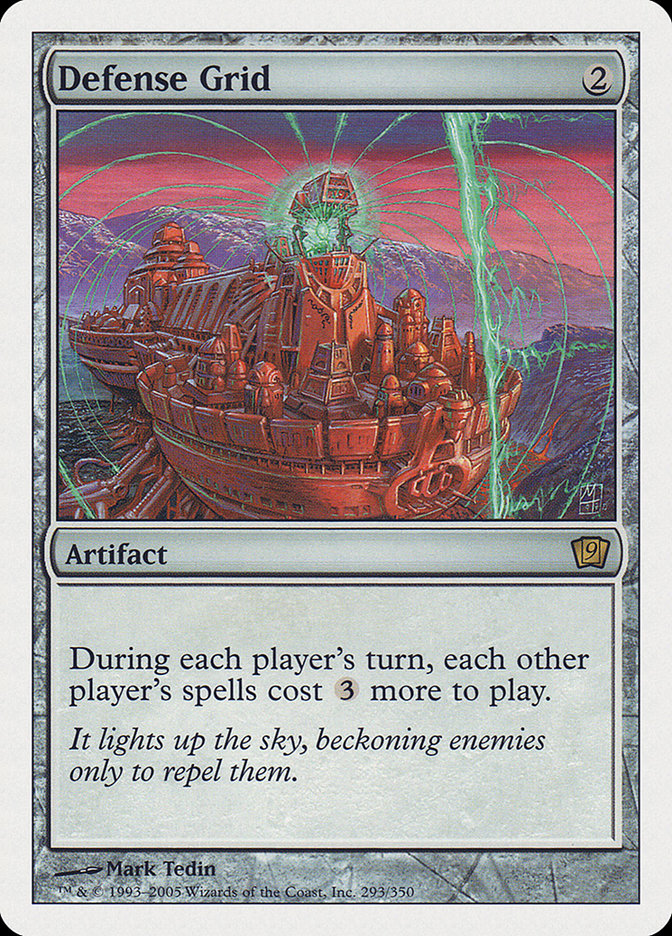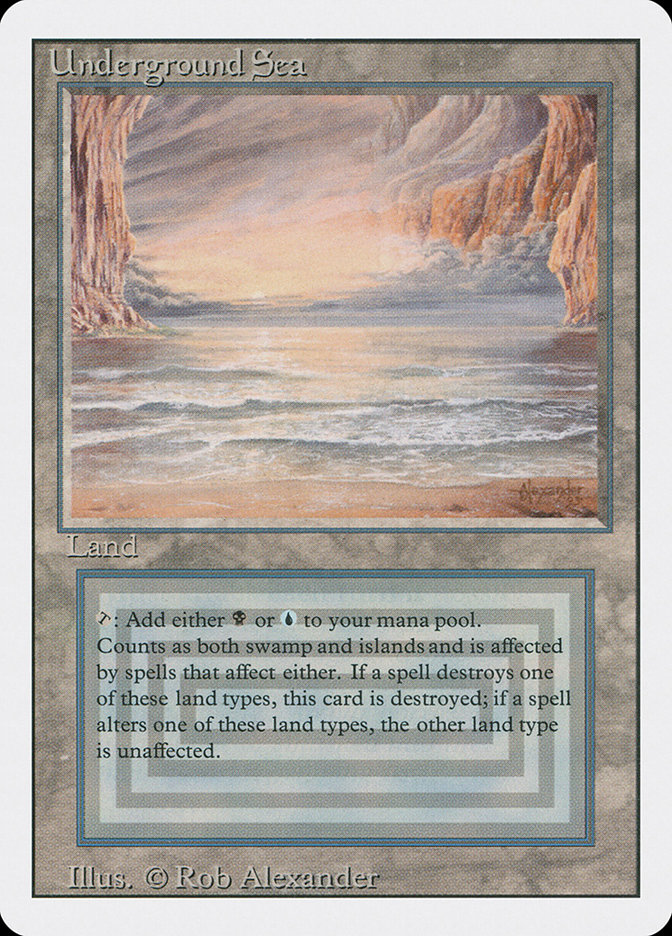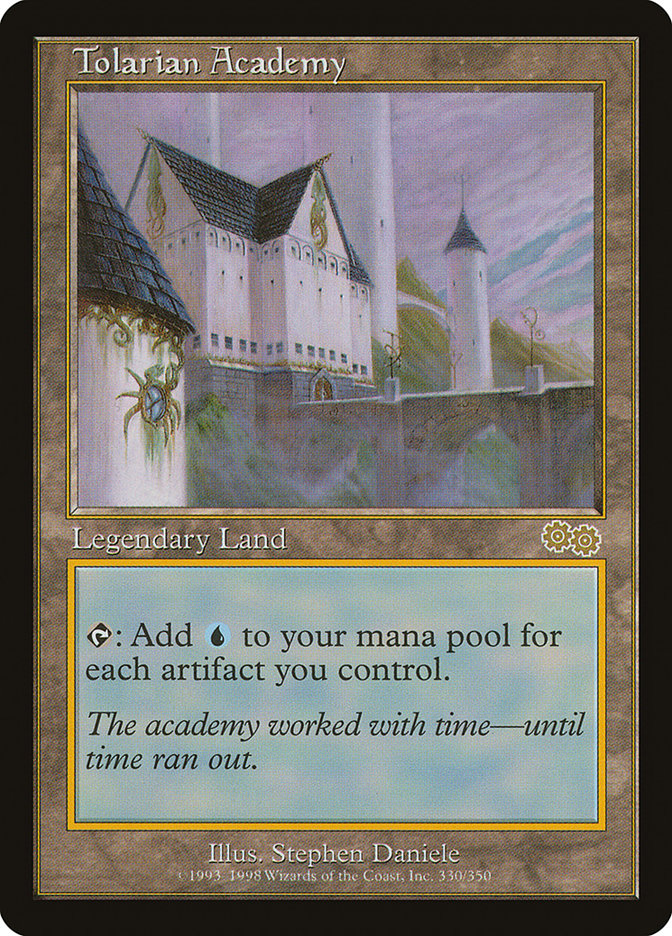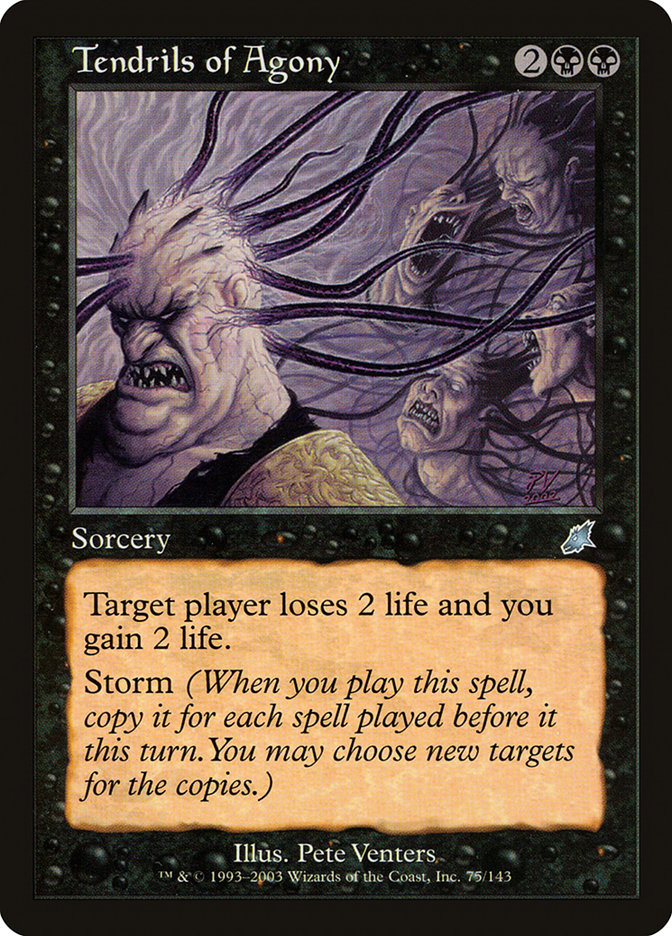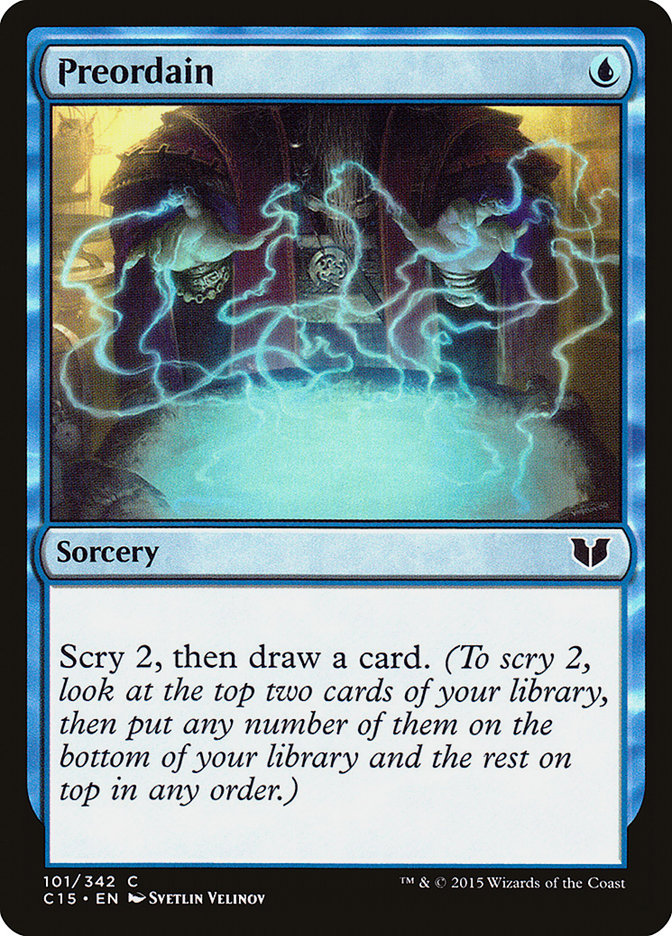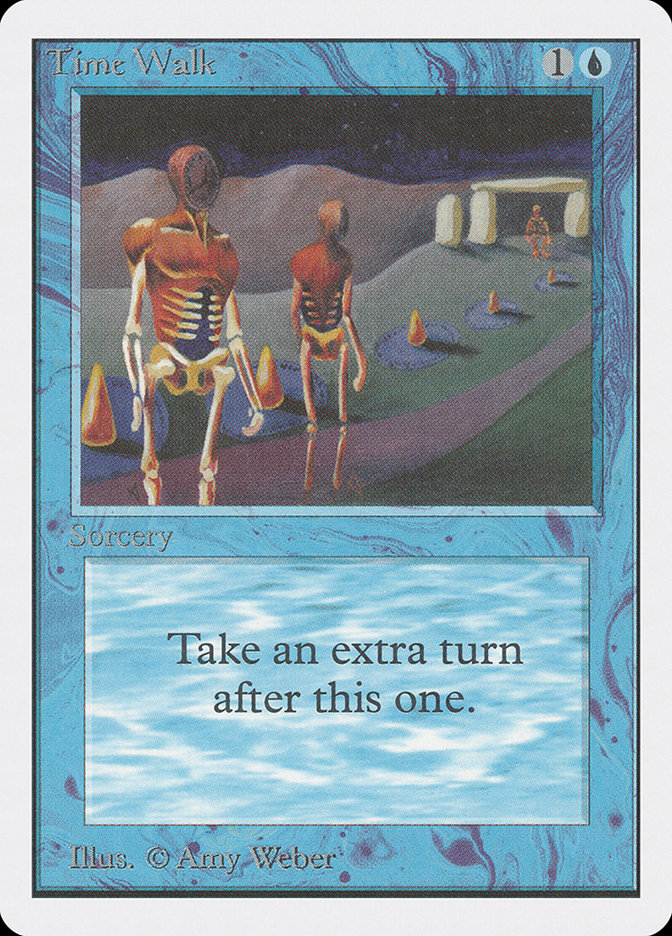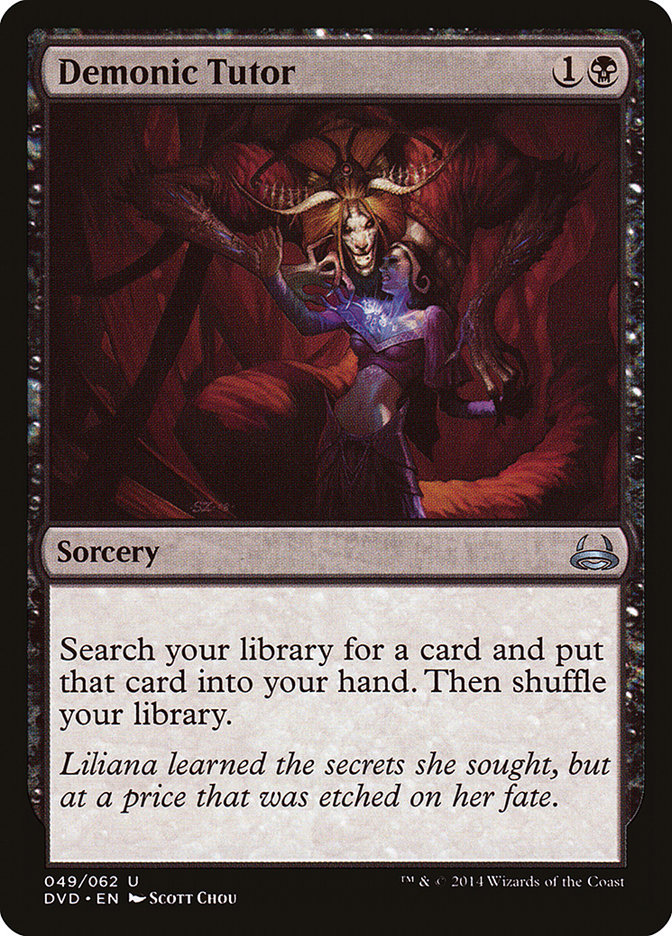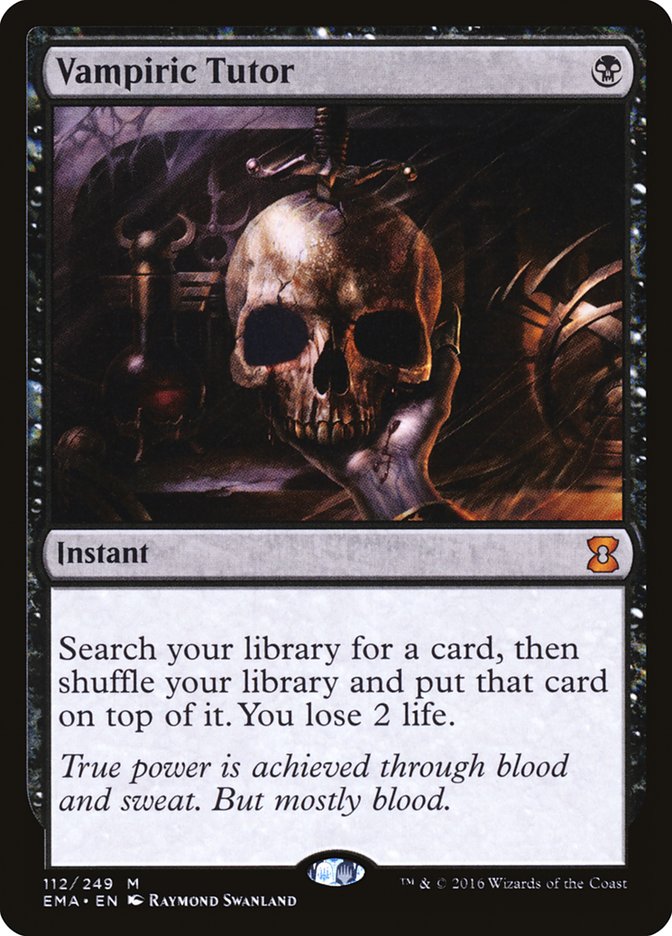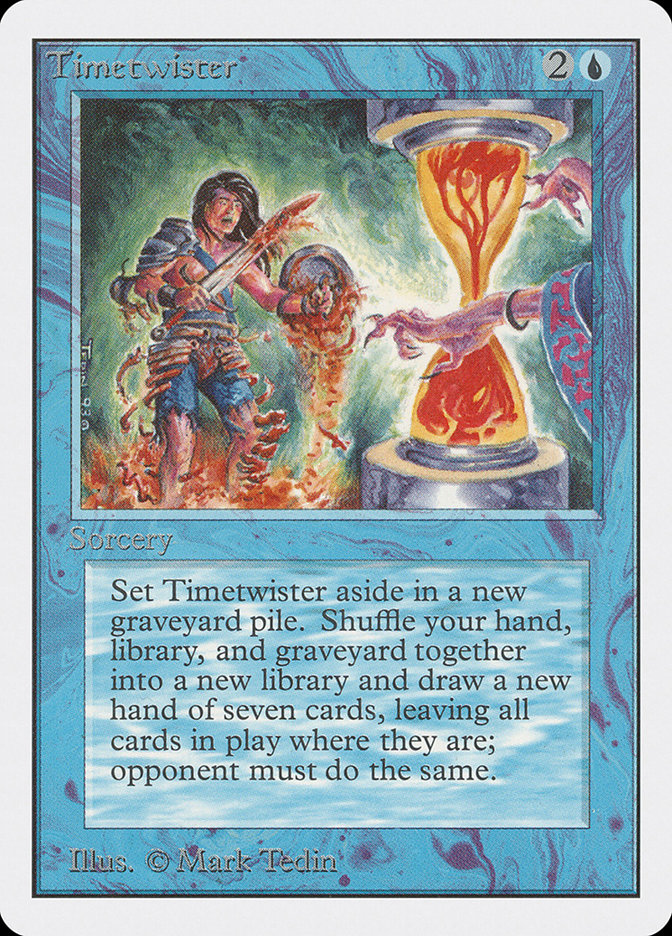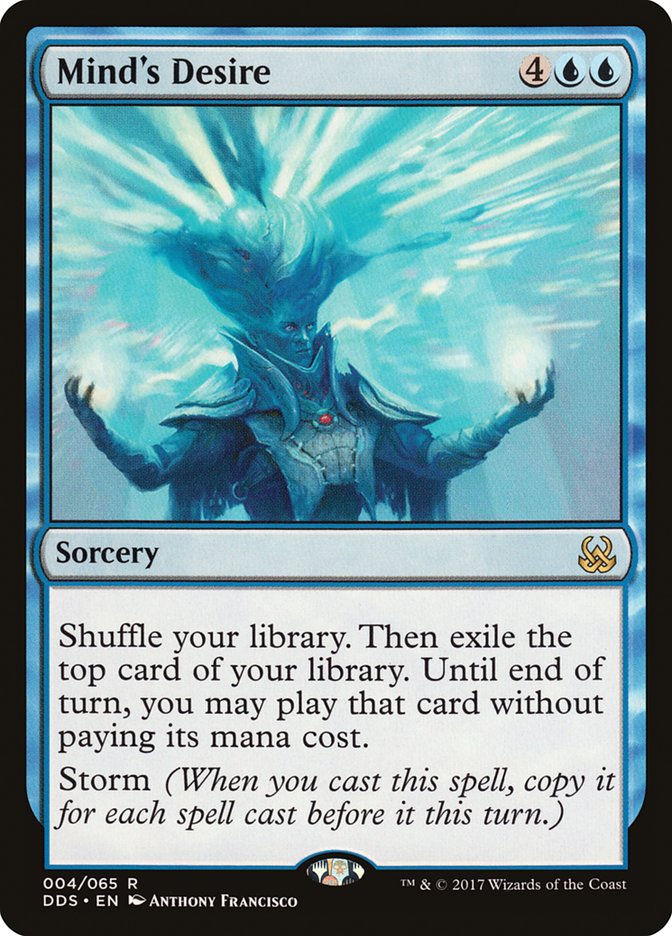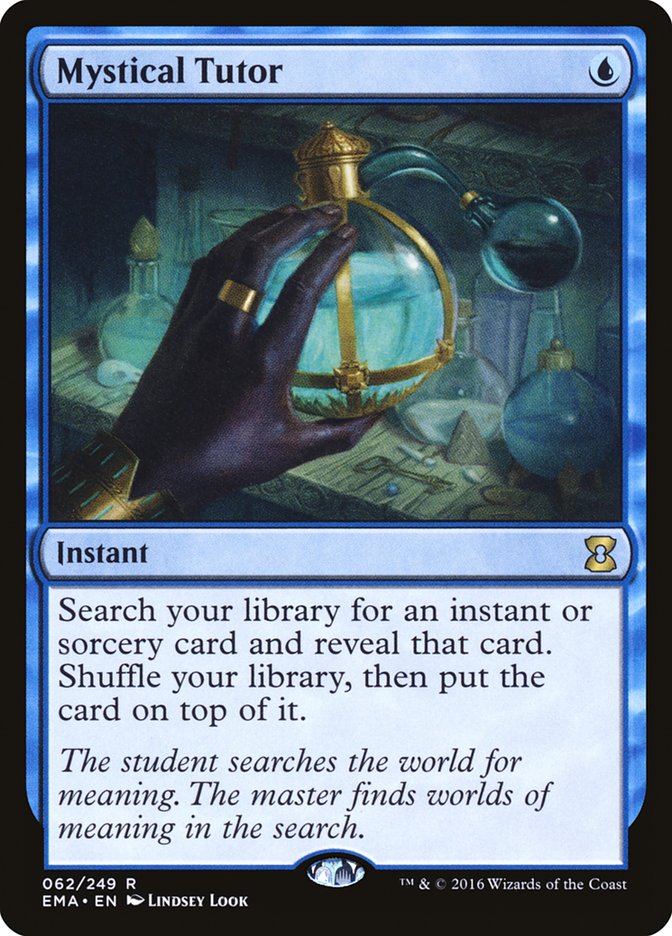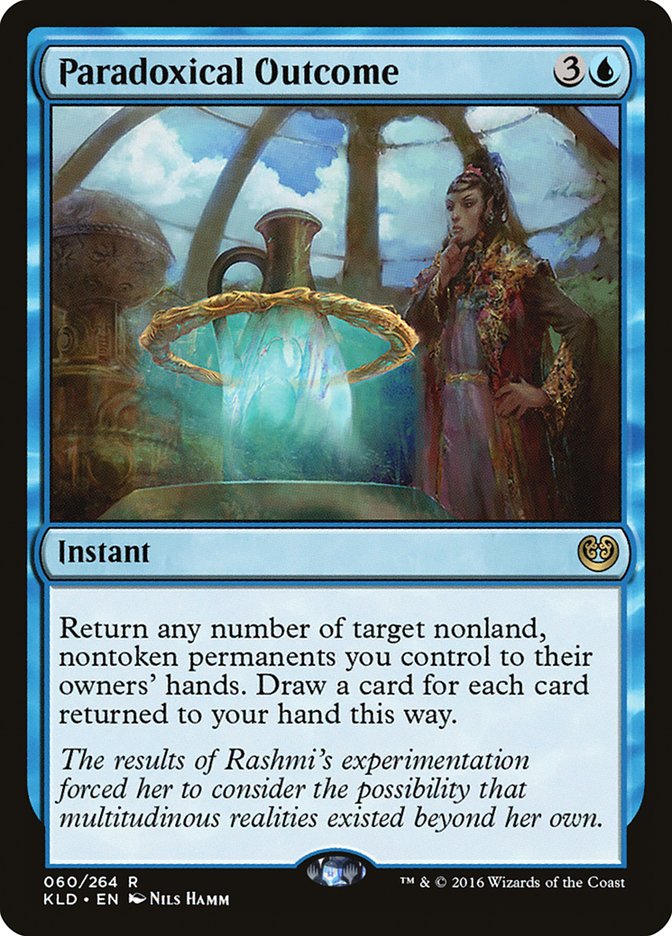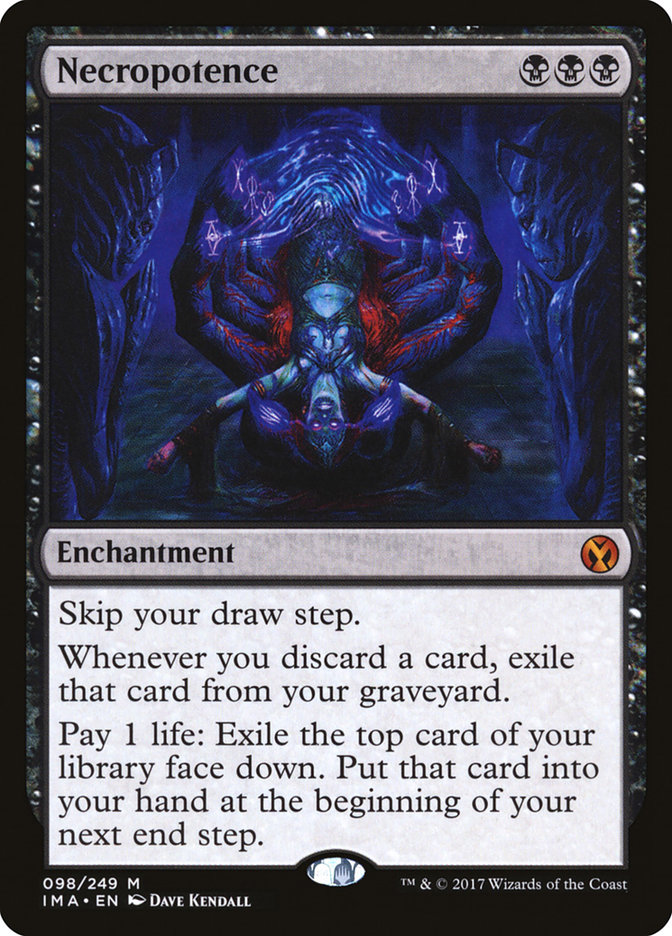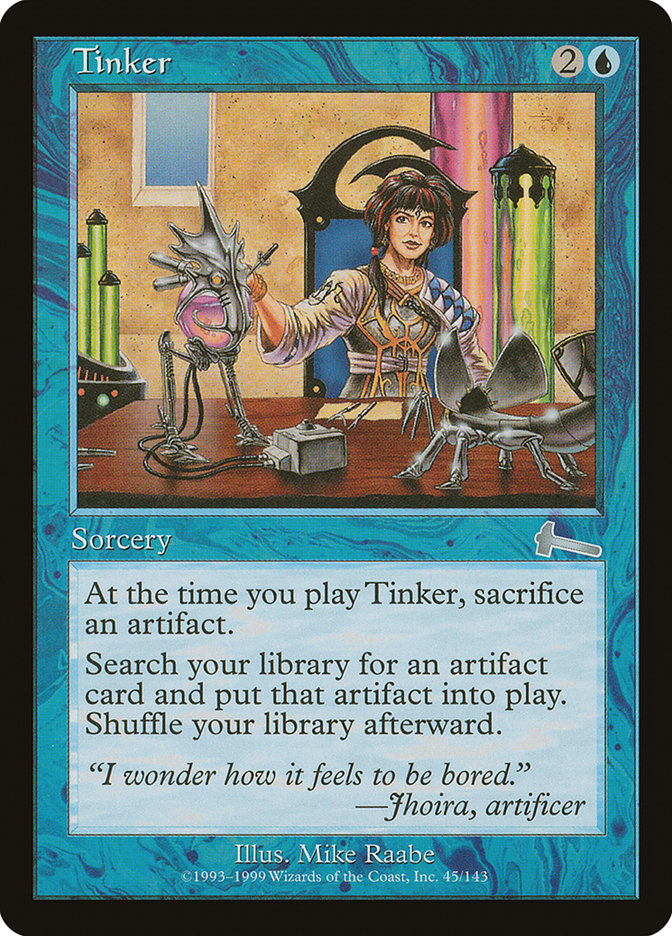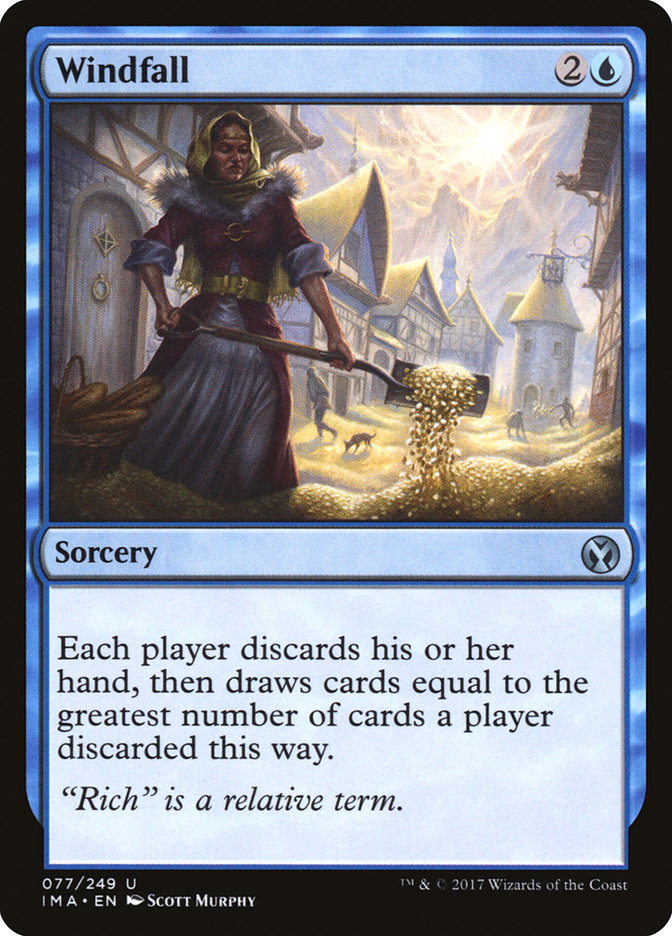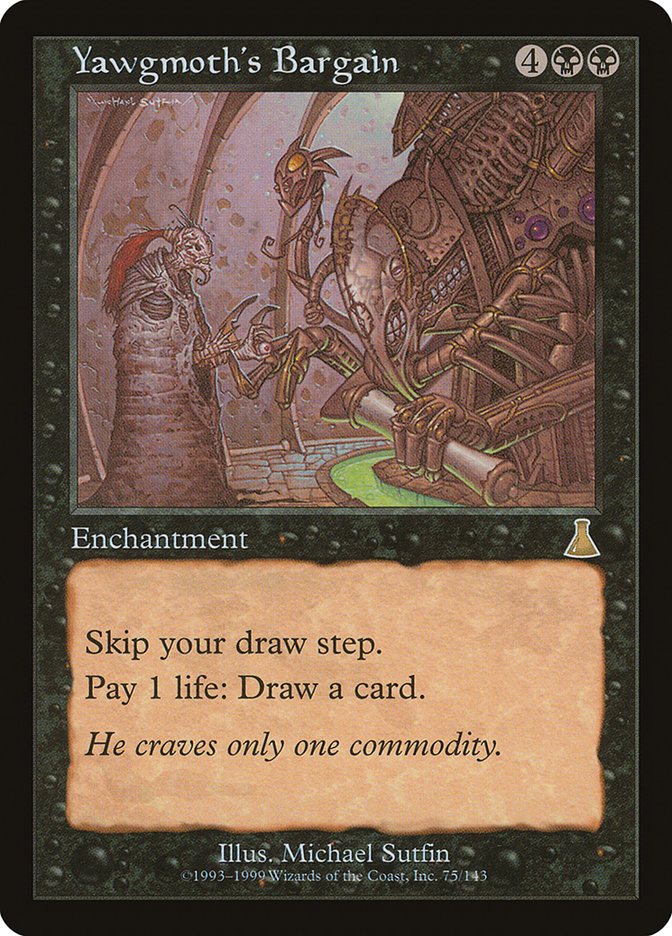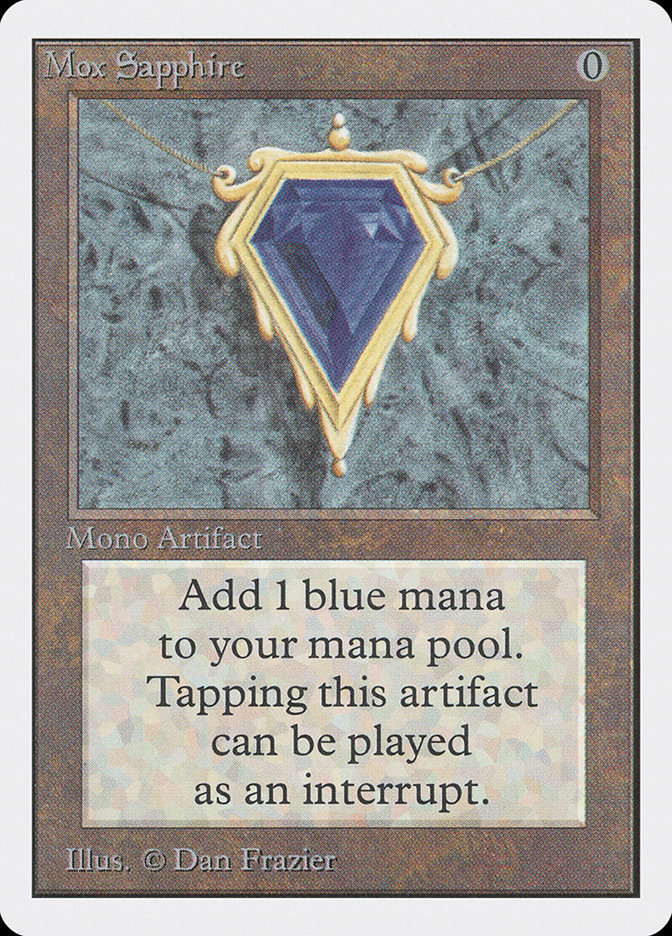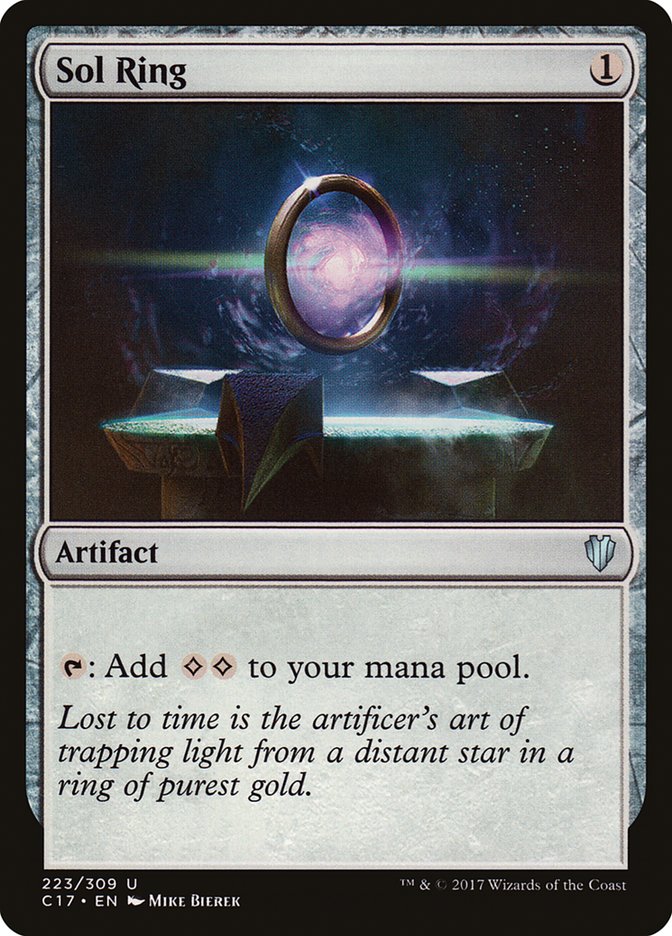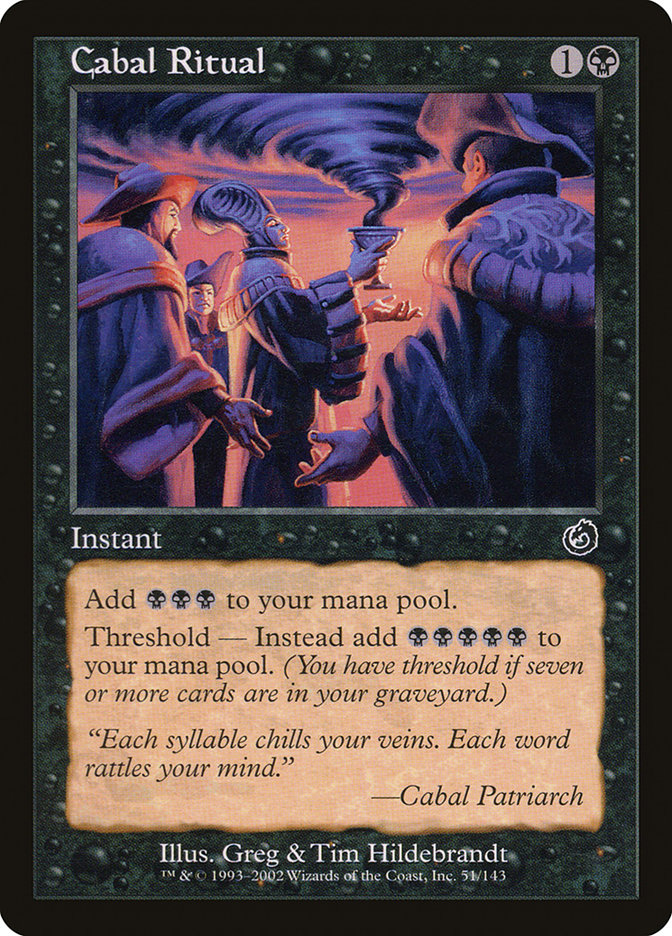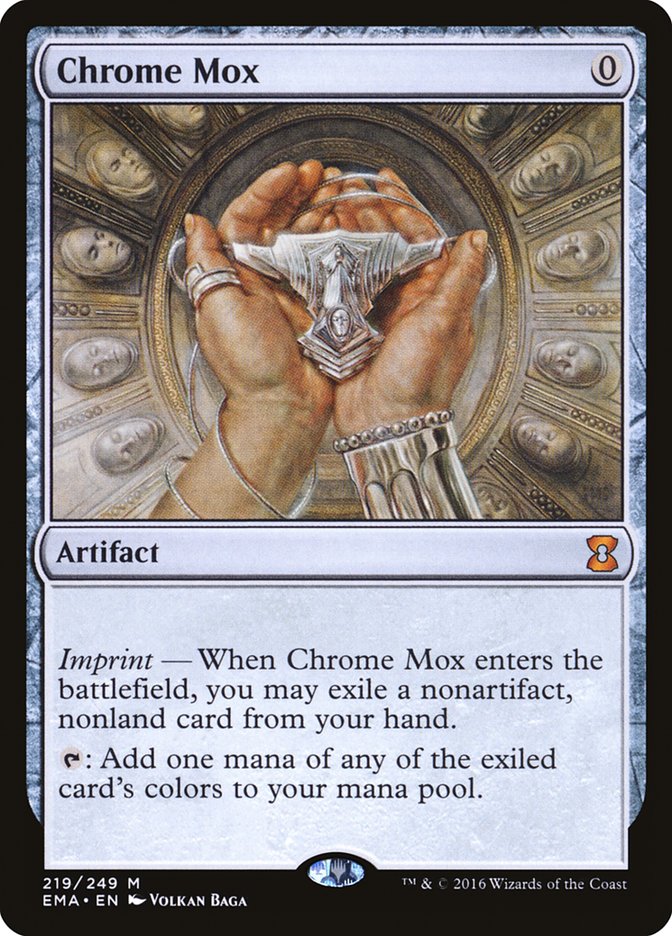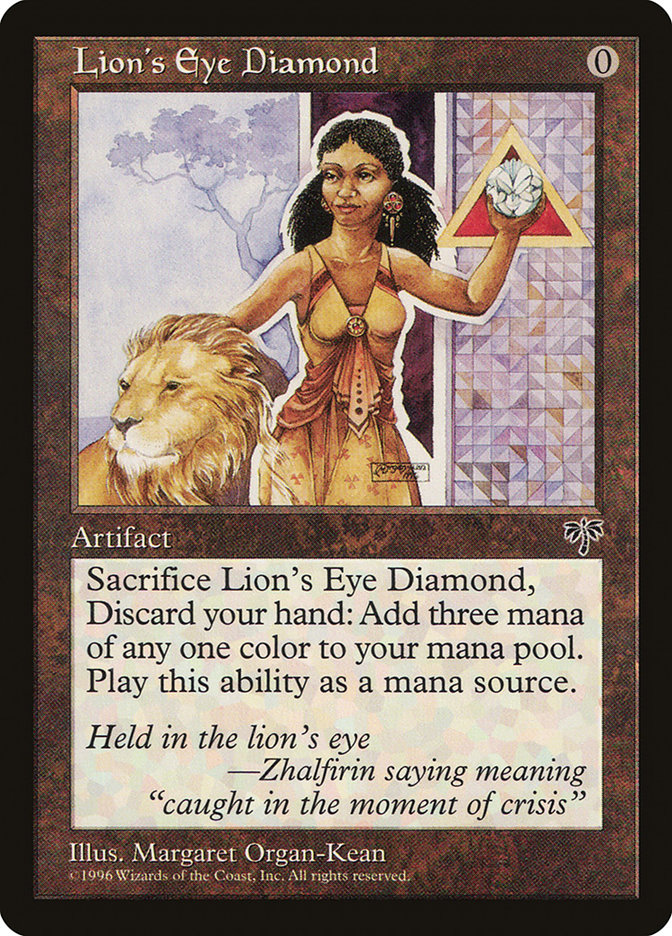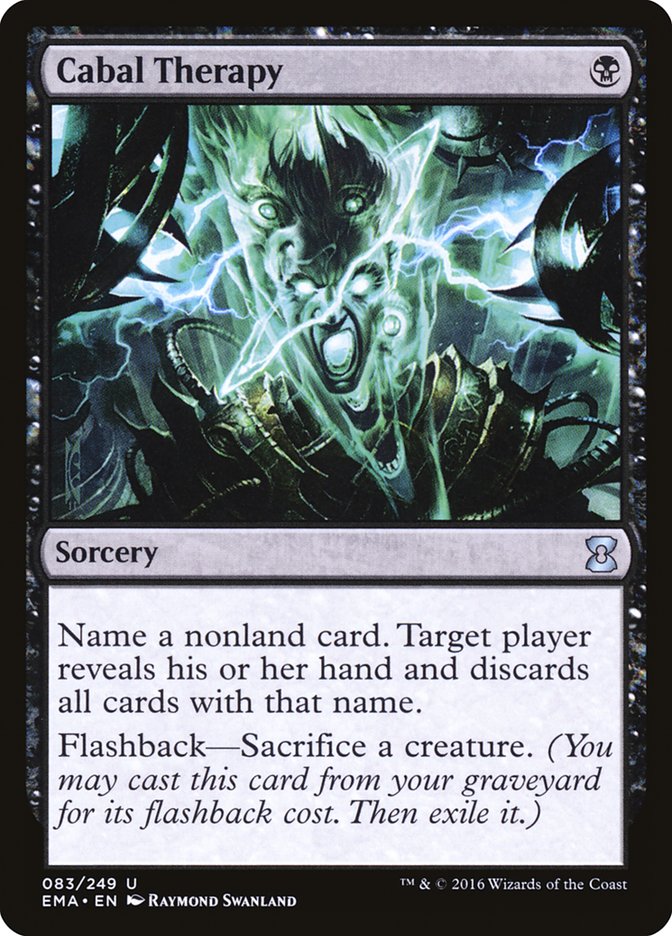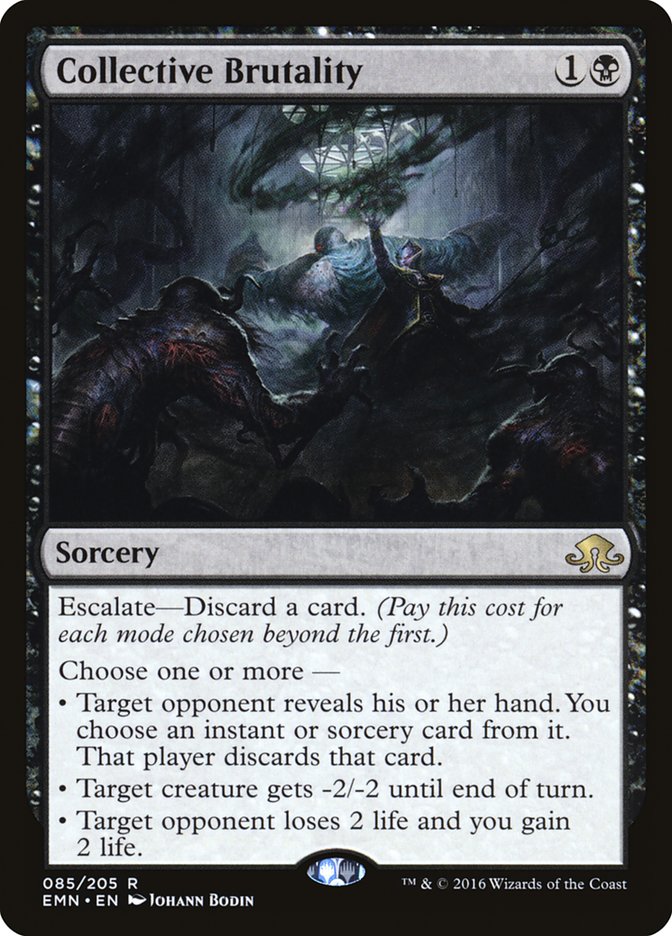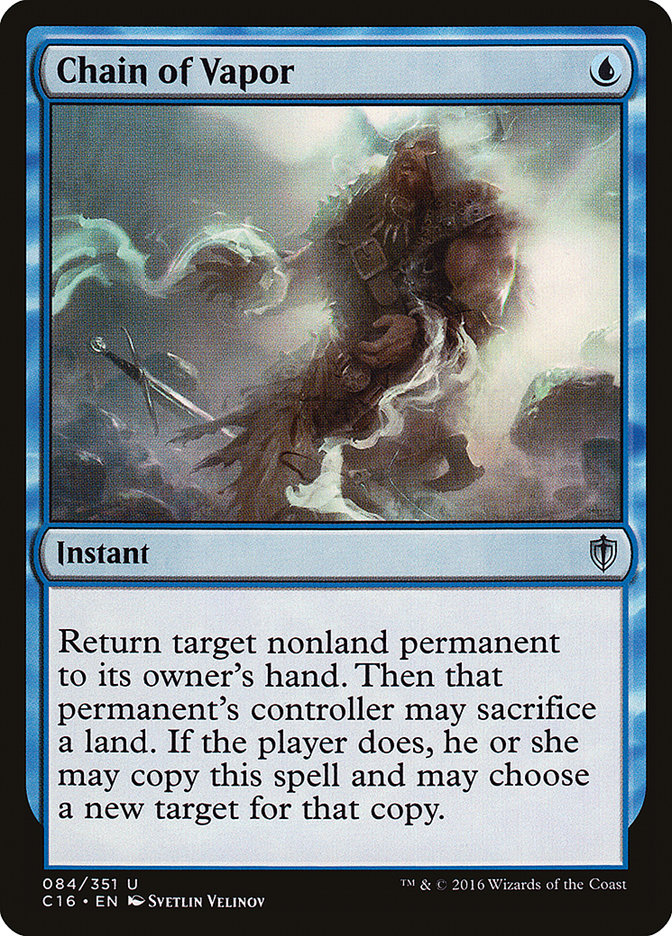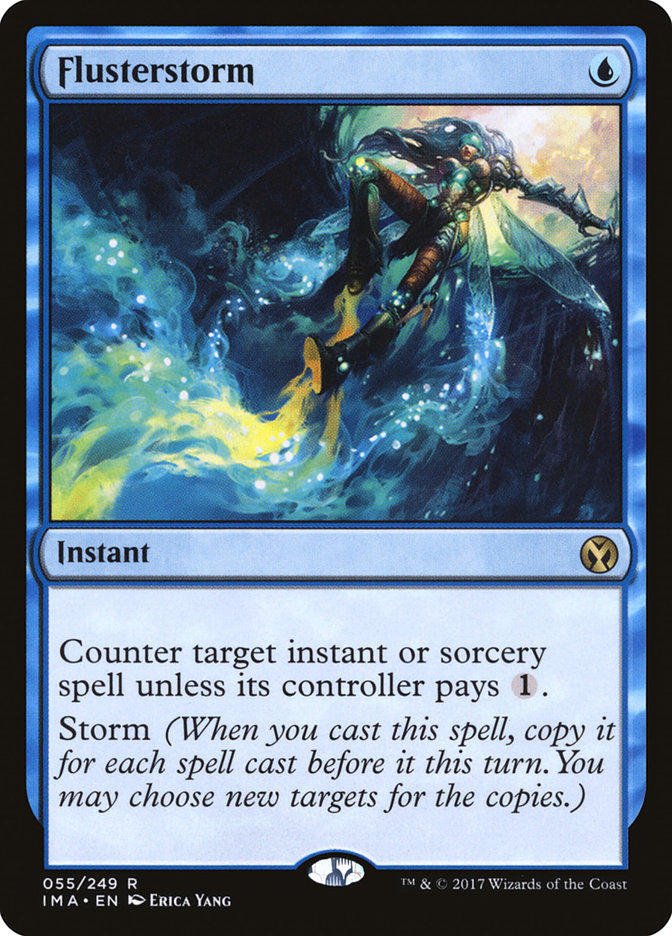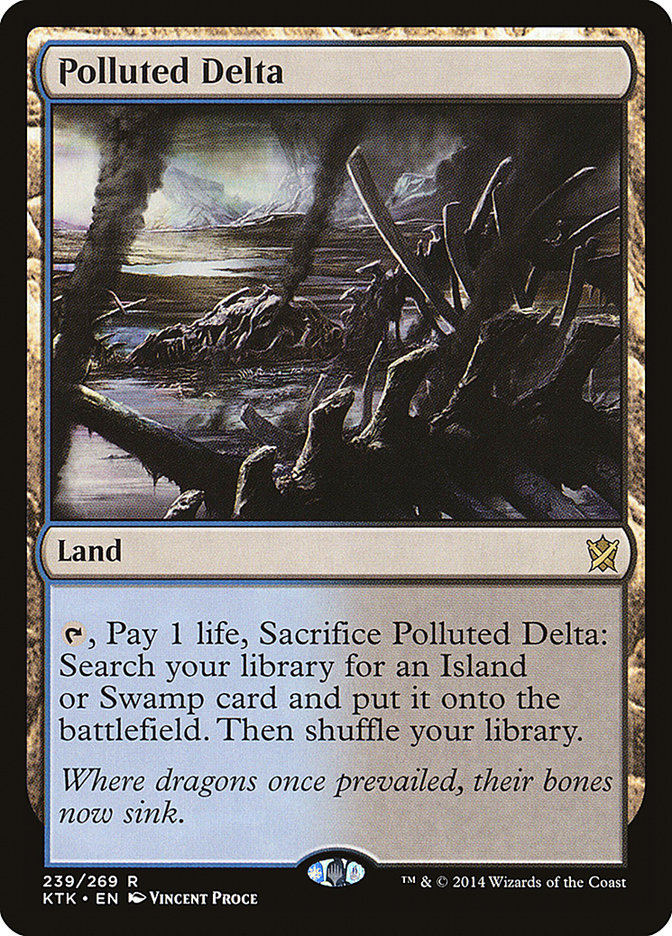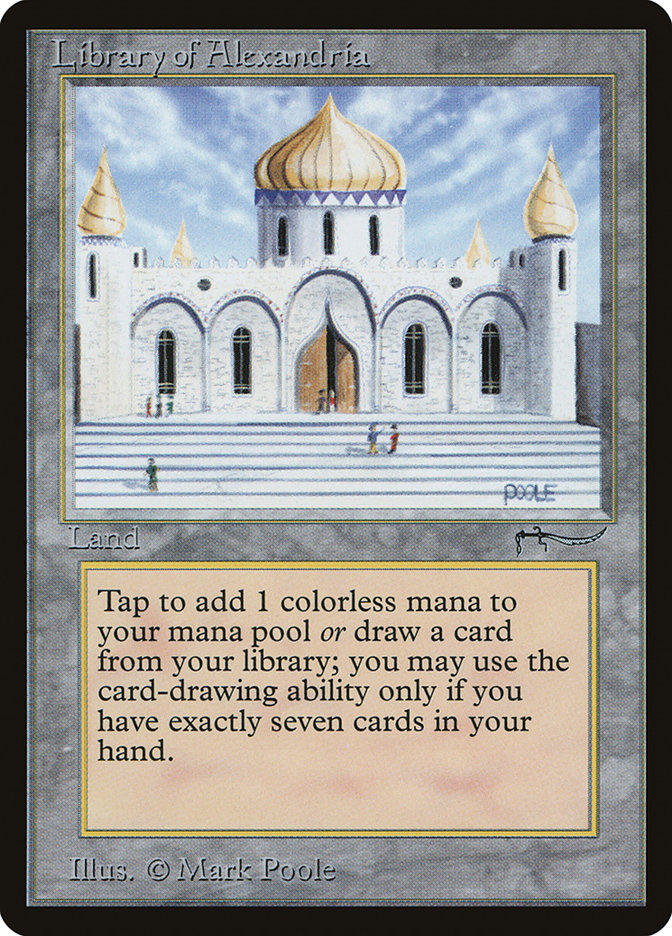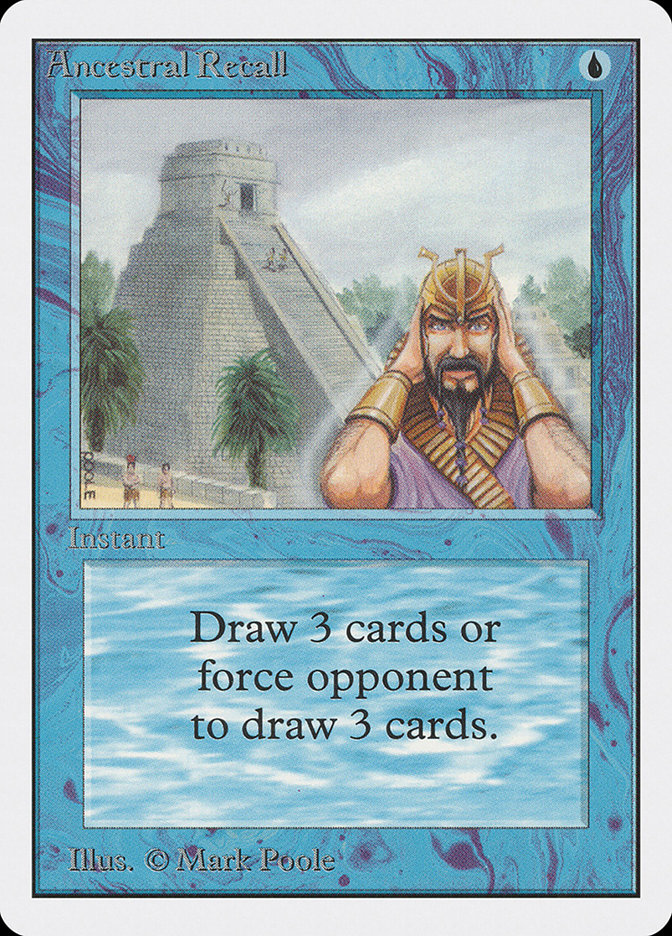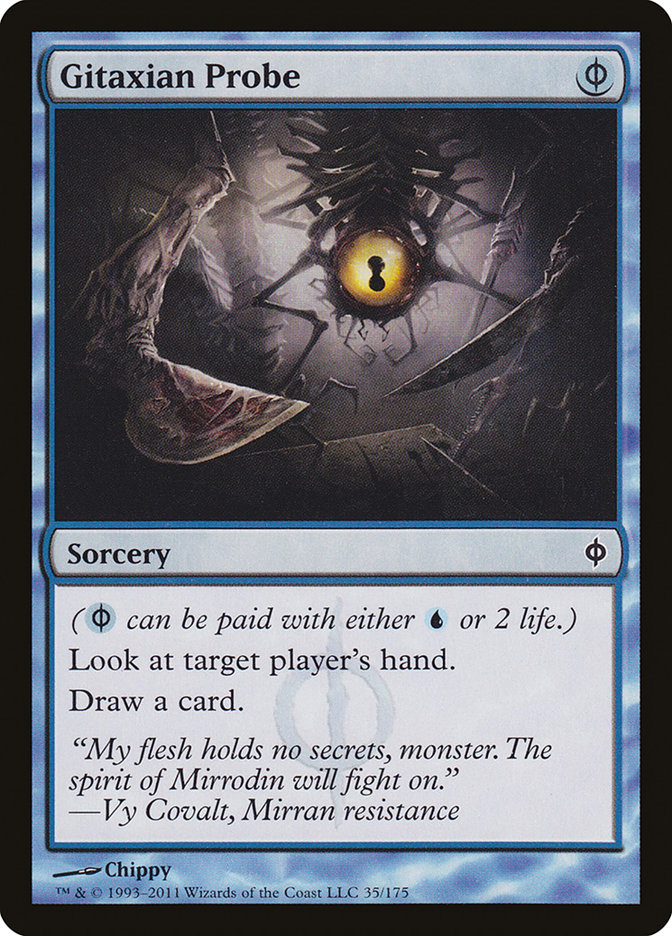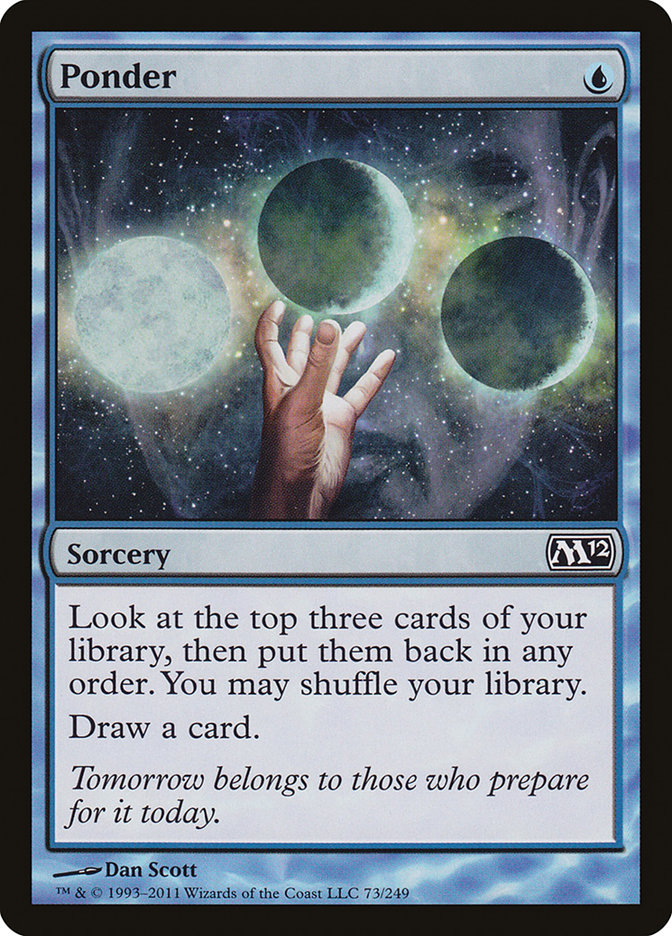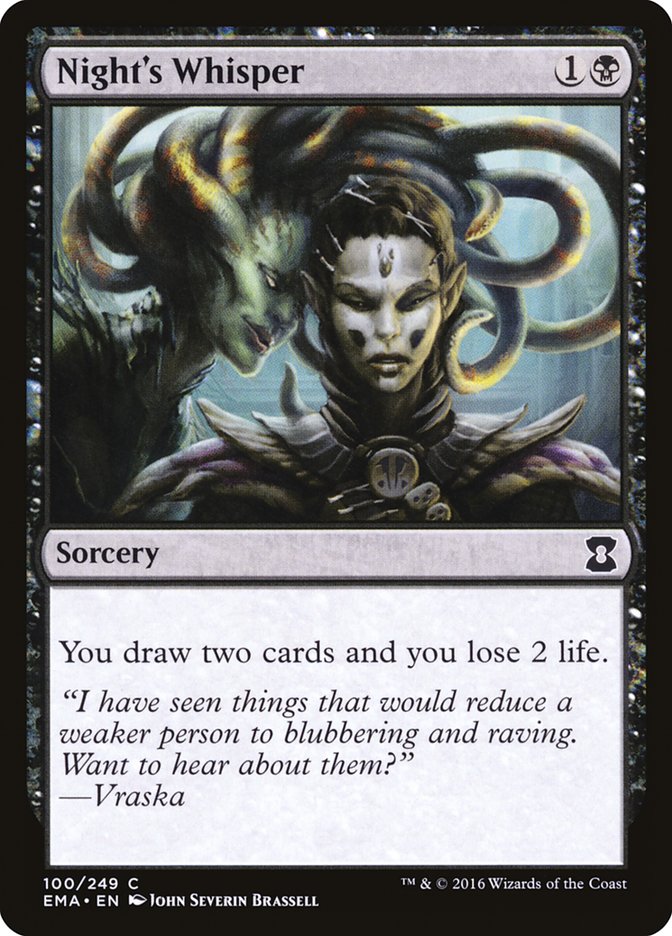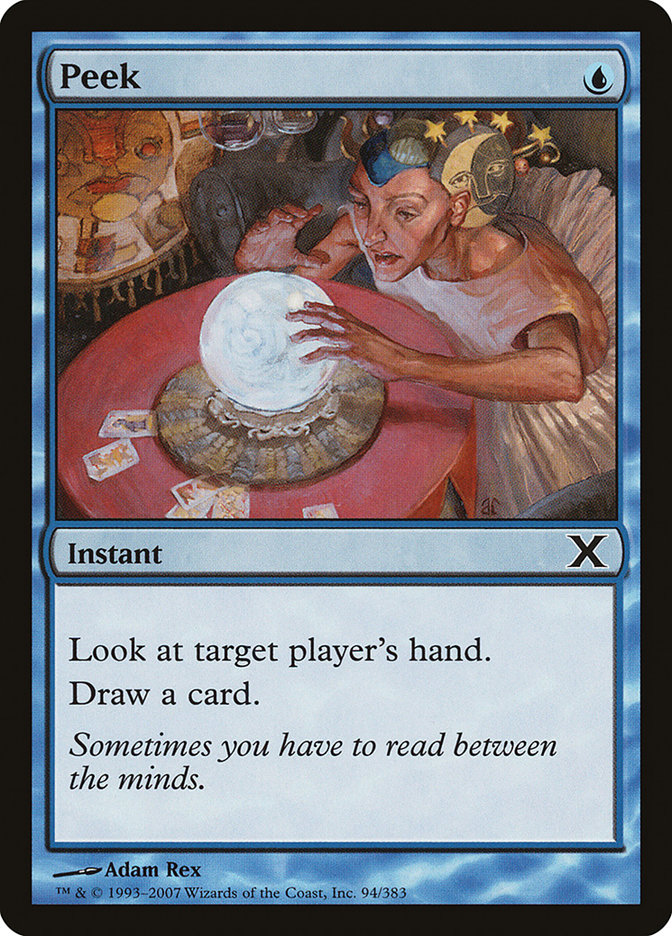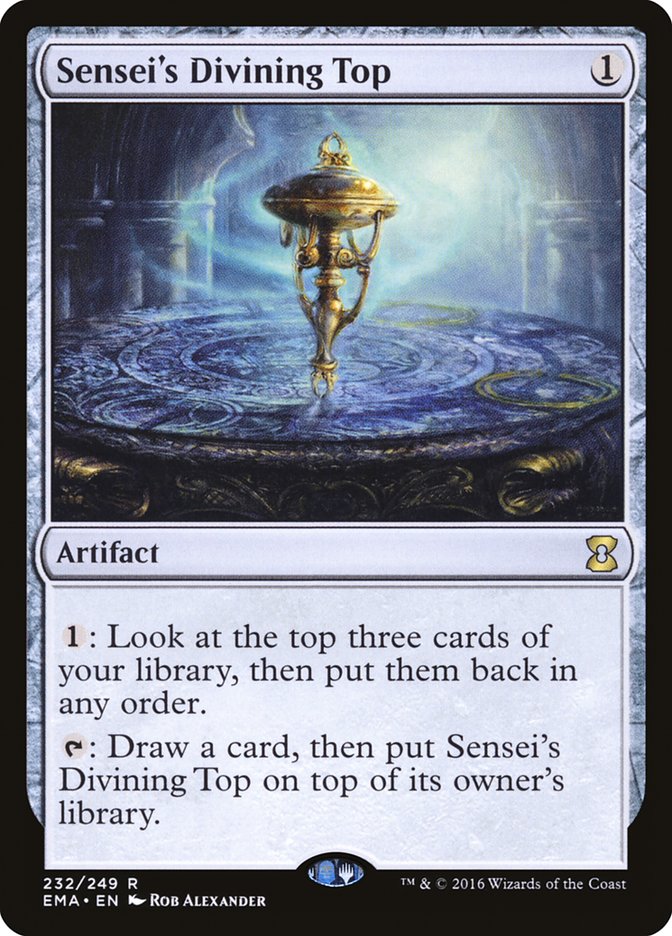A lot of people I have talked to over the years view Dark Petition Storm
(DPS) as a linear combo deck. The truth is that is only partially right.
DPS is a linear combo, but the lines to get the combo should be different
every time. By that I don’t really mean play pattern (because there will be a lot of similar play patterns); I mean the actual construction of
the deck itself. I believe DPS is constantly in motion. You need to find
the ways that people are trying to interact with you and attack from a
different angle. You should only run back the exact same 75 once in a blue
moon. If you still want to learn the ways of Keranos despite this, please
read on.
The other way I describe DPS to people is that it’s a deck of ratios.
There’s a tricky balance between interaction, threats, selection, and mana
you must maintain to win the game. While these ratios often are fiddled
with after sideboard, try your best to keep them as close to the starting
ones as possible. The deck is configured a certain way for a reason and
shifting things too much will cause it to function improperly. Over the
years, the ratios developed for the deck are:
Business/Bombs:
Minimum 11
Fast Mana:
Minimum 16
Interaction :
8-10
Lands:
12-14
Win Conditions:
1-2
Card Selection & Misc:
Maximum 11
Different expected metagames call for different ratios during the
deckbuilding process. In a metagame full of hard blue control, you’ll want
more Interaction and fewer Fast Mana/Lands as the games will likely go on
long enough for you to hit your mana, and you’ll need to grind through
their disruption. If you miss a little bit on your ratios for any given
tournament, don’t worry; the deck is still powerful enough to win despite a
minor to medium metagame misread. A super rough guide for how I’d configure
my ratios for specific matchups would be this:
VS Shops/Prison heavy
– More Interaction (bounce and/or removal), 14 Lands.
VS Creature decks
– More Interaction (removal), more “small ball” Bombs (e.g. Tinker).
VS Dredge
– More bombs, more Fast Mana, less Interaction.
VS Opposing Combo
– More Bombs, more Interaction (discard), less Selection.
VS Oath
– You kind of just crush them. More Interaction (discard and bounce), Fewer
Lands as the game likely will go long.
VS Turbo Xerox
– More Interaction (Defense Grid type effects), more “small ball” Bombs,
less bounce
VS Control
: Stated above, more Interaction and fewer Fast Mana/Lands
Metagames will typically never be as cut and dry as the above list. They’re
going to be a mix of a few of these different elements jumbled together and
figuring out a correct balance is a skill that really can only be gained
with time.
Now that we have the general concept behind the deck out of the way, let’s
break down each card that can potentially see play in each category as well
as tips and tricks. For the initial breakdown I’m only going to stick to
things that are black, blue, or colorless. The cards other colors provide
will be in their own section, as the third color (if there is one) is also
something that shifts over time. Each section will be broken into what I’m
going to call “mandatory” and “flex.” Cards in the “mandatory” are cards
that I think should be in the deck 99% of the time (I suppose there
technically can be metagames where you cut them, but I personally haven’t
encountered them). Cards in the “flex” spot are things I think can be
fiddled with.
Bombs
Mandatory
This is the card that impacted the archetype so much it’s now named after
it. Most of the time you’re going to be tutoring for Yawgmoth’s Will or
Black Lotus when you have the win or tutoring for Necropotence when you
don’t. I’ve heard complaints ever since the card was printed that the card
is too clunky and bad in multiples. The card is inherently chainable by its
nature, as the first Petition can grab more mana to cast the second one.
Worst case, the first one gets countered and you can fire off the redundant
copy next turn. A complaint about Petition that has been valid in my
experience is graveyard hate is now even more potent against you than it
was before the powerful five mana sorcery was incorporated. If you expect
people to be packing seven or more cards that actually exile your
graveyard, go down to three. Otherwise play the full four. You’ll be happy
you did.
We have a lot of restricted cards in our deck. These are the best ways to
find them. Mystical Tutor is passable but too narrow for my taste, and
Imperial Seal is hot garbage. Vampiric Tutor is sideboarded out in the blue
matchups a lot, but it’s still impactful enough that I can’t imagine not
starting it.
This is the unruliest of the bombs since there’s no way to tell what
exactly you or your opponent will get once it’s done resolving. While it
may not always lead to a kill, having at least one Draw Seven effect in the
deck gives you an out to refuel if your opponent has managed to handle all
of your threats.
Read this card. Any questions?
Alright, let’s go into a tiny bit more depth on this one. Important things
to note are that Yawgmoth’s Will does exile itself upon resolution, cast
your spells with Threshold first, and to always make sure you leave enough
instants/sorceries in your graveyard to enable spell mastery on Dark
Petition.
Flex
I love this card. Not only can it win games no other card in Magic can win
you, it’s just so much fun to resolve. My stance on this card is best
summed by Ari Lax: “I don’t know/care if it is right, but I would not cut
Mind’s Desire.”
If there’s a haymaker you really need to tutor for, this card is great.
If you have enough artifacts to return to your hand, I don’t mind this card
as a one-of. Its play pattern is very different compared to the rest of
your deck (dumping things on the battlefield and then casting Paradoxical
Outcome versus one giant haymaker turn), so play with that in mind.
Necropotence is in a weird spot in Vintage right now. The way Vintage in
2018 plays out, unless you’re against hard control like Landstill, the
longer the game goes the worse Necropotence becomes. But the upside of
landing it on turn one or two is so high, and it makes Dark Petition all
the more useful. In Vintage decks with lots of tutors I like my high impact
one-ofs, so my advice would be to always try and fit this into your deck
unless you expect a hyper aggressive metagame.
One of the best cards a Storm deck can play against Shops decks since you
only have to cast one spell. On the flip side, it’s awful against most of
the blue decks due to things like Dack Fayden, Pyroblast, Jace, the Mind
Sculptor, Teferi, Hero of Dominaria, or getting combo-ed out.
Don’t play Windfall unless you’re in a super combo-heavy metagame.
It’s time to talk about controversial opinion number one – I loathe
Yawgmoth’s Bargain in DPS. This may be counterintuitive considering how
high I am on Necropotence, but it all comes down to the concept of ratios I
mentioned earlier. Multiple copies of Yawgmoth’s Bargain don’t do anything
with themselves nor Necropotence. Assuming we play the full four Bargains
along with Necro, then five of our minimum eleven bombs have a large chance
of having no text whatsoever. We could start trimming on Bargains, but then
the cards that are played to support them (Chrome Mox, Lion’s Eye Diamond,
etc) get worse and worse. If you have a deep desire to register this card,
play two max.
Fast Mana
Mandatory
This section is for all the mana rocks I think one should always play in
the deck. They are: Black Lotus, Lotus Petal, Mana Crypt, Mana Vault, Mox
Emerald, Mox Jet, Mox Pearl, Mox Ruby, Mox Sapphire, and Sol Ring. I
honestly can’t think of a world where I wouldn’t have all of these in my
starting 60.
Dark Ritual is pretty self-explanatory. This card has been enabling broken
plays since Alpha and it still does so here. Remember to be conscious of
potential copies of Mental Misstep from the opponent’s side while setting
up a turn relying on Rituals. Also, don’t forget you can sandbag them to
help pay for copies of Flusterstorm if needed.
While this doesn’t always generate as much mana as Dark Ritual, Cabal
Ritual is still an important effect to have in your deck. It’s an amazing
burst of mana when you’ve hit threshold that also conveniently plays around
Mental Misstep. While I only list two in the mandatory section, it can be
correct to go up to four depending on how the rest of the deck is
configured.
Flex
I group these two together because I view them in a similar light. If
you’re leaning on Yawgmoth’s Bargain you’ll want these to help generate
mana after you tap out for your six drop. Outside of that I personally
leave these two on the bench more often than not.
Interaction
Mandatory
You’re always going to want between four and six discard spells in your
deck. The more combo there is in the room, the more of this effect you
should have. Four is the number you need to make sure you see one, and any
more than six you’ll flood on them in the mid/late game. The different
discard spells listed above are the ones you should switch out depending on
the expected metagame. For example, if you expect a lot of decks with
creatures in them you should register Thoughseize before any copies of
Duress.
A quick aside on Collective Brutality: I love this card. The fact that it
dodges Mental Misstep while also being to remove disruptive creatures like
Phyrexian Revoker or Thalia, Guardian of Thraben is a huge game. I will
often go out of my way to make sure I have at least one copy of this card
somewhere in my 75.
The single best disruption piece you can have against fair blue decks. It
dodges both Flusterstorm and Mental Misstep, and it affects every single
spell your opponent uses to try and interact with you. The downside of
being dead against Shops is worth it given how strong it is everywhere
else. I’ve listed two as the minimum required, but I personally always play
three whenever I sleeve the deck up. I could even see going up to four
depending on the room; it’s that good.
The purpose of Hurkyl’s is twofold. The obvious role is to serve as a
maindeck bullet against Shops (and technically, Paradoxical Outcome decks).
It also serves as a potent ritual in the blue matchups, generating both
mana and storm count by bouncing all your mana rocks back to your hand.
Always sleeve up one, but don’t hesitate to pack more if you expect a room
full of Workshops.
Flex
While technically not required in the maindeck, I always like having a
single catch-all to get rid of any troublesome permanents. Like Hurkyl’s,
it’s also can be a ritual in a pinch by bouncing all your own moxen. If
you’re worried about Mental Misstep, this slot can also be an Echoing
Truth.
Really good at fighting opposing Flusterstorms as well as being a random
out to opposing combo decks.
Lands
Mandatory
The general note here is that you always want at least four fetches, two
Underground Seas, a Tolarian Academy, and a basic land. If you want to play
a splash color, a U/X dual and a B/X dual are also a requirement. Keep in
mind your basic land requirements when choosing your fetchlands, as a
sideboard basic is not uncommon.
Flex
Library is such an inherently broken card that I often include it in my DPS
lists. You’re a huge favorite in virtually any fair blue matchup with it,
and in the matchups where it’s bad it still helps you cast your expensive
spells.
Win Conditions
Mandatory
Always remember to register your Tendrils. You’re probably not LSV, so you
do actually need a way to win the game.
Flex
If you’re on the Tinker plan make sure to have a robot. I’ve honestly been
giving some thought to Sphinx of the Steel Wind in this slot instead, but
Blightsteel Colossus being able to win the game in one hit is better if you
want to go that route.
Card Selection & Misc
Mandatory
These are the broken restricted cards. Play them and be happy whenever you
see one.
Flex
This group of cards is for when you want to add a bit of velocity to your
deck. I know you all are probably sick of me saying this by now, but the
cantrips in your deck should change based on what you expect to face.
Preordain is just good, the information gained on Peek can be invaluable,
Night’s Whisper helps generate critical mass, and Sensei’s Divining Top
lets you filter your draws every turn.
Controversial opinion number two – I don’t think Time Walk is good in DPS.
The fact that you lose your Storm count from the previous turn is a huge
minus, and unlike other combo decks you’re not really taking advantage of a
set up turn. I will concede that it’s great alongside Draw Sevens and/or
Necropotence, and there’s no way I’d ever play Tinker or Monastery Mentor
without Time Walk in my deck. Outside of that I’ve had more success without
the card in my 75 than with it included.
Sideboarding
Whenever I put a sideboard together, I tend to focus on beating Shops, Fair
Blue, Combo/Dredge, and Oath in that order. I also like making sure to have
some answers to hate permanents my opponents can have. Some commonly played
sideboard cards are:

Splashes
Splashing in DPS is relatively free, and it gives access to a lot of
effects you wouldn’t get with just two colors. Here is a list of everything
I’ve splashed for over the years:
White

Red

Green

With all of that theory out of the way, let’s look at some decklists!
Lands (13)
Spells (47)
- 1 Tendrils of Agony
- 1 Brainstorm
- 2 Cabal Ritual
- 1 Vampiric Tutor
- 1 Yawgmoth's Will
- 4 Duress
- 1 Necropotence
- 1 Mana Vault
- 1 Wheel of Fortune
- 1 Sol Ring
- 1 Demonic Tutor
- 1 Hurkyl's Recall
- 4 Dark Ritual
- 1 Ancestral Recall
- 1 Mana Crypt
- 1 Timetwister
- 1 Mind's Desire
- 2 Night's Whisper
- 4 Defense Grid
- 1 Black Lotus
- 1 Lotus Petal
- 1 Mox Emerald
- 1 Mox Jet
- 1 Mox Pearl
- 1 Mox Ruby
- 1 Mox Sapphire
- 1 Ponder
- 1 Manamorphose
- 3 Preordain
- 1 Gitaxian Probe
- 4 Dark Petition
Sideboard

I built this list to be geared more towards fair blue matchups. We’re a bit
slower, but our disruption hits hard and our selection effects dig us
deeper. The sideboard is where the matchup goes from good to great. Being
able to fire off an early Empty the Warrens for six or eight Goblins is
often enough to steal any games from anything not looking to go more broken
than you are. We still have game against Shops and Dredge, but we’re making
concessions in the Paradoxical Outcome matchup to do all of this. Out of
all of the lists in the article, this what I’d base a list for SCG CON on.
Creatures (1)
Lands (14)
Spells (45)
- 1 Brainstorm
- 4 Cabal Ritual
- 1 Vampiric Tutor
- 1 Yawgmoth's Will
- 1 Duress
- 1 Necropotence
- 1 Mana Vault
- 1 Wheel of Fortune
- 1 Sol Ring
- 1 Demonic Tutor
- 2 Hurkyl's Recall
- 1 Time Walk
- 4 Dark Ritual
- 1 Ancestral Recall
- 1 Mana Crypt
- 1 Timetwister
- 1 Mind's Desire
- 2 Defense Grid
- 1 Tinker
- 1 Black Lotus
- 1 Lotus Petal
- 1 Mox Emerald
- 1 Mox Jet
- 1 Mox Pearl
- 1 Mox Ruby
- 1 Mox Sapphire
- 1 Ponder
- 4 Thoughtseize
- 1 Gitaxian Probe
- 4 Dark Petition
- 1 Collective Brutality
Sideboard

Do you hate Shops with every fiber of your being? Want to see it crushed
into the ground by an angry group of pink elephants?
If so, this is the deck for you! I would only recommend this for a very
specific metagame since it’s a lot weaker across the board, but it’s really
good at what it does.
Creatures (1)
Lands (13)
Spells (46)
- 2 Sensei's Divining Top
- 1 Brainstorm
- 3 Cabal Ritual
- 1 Vampiric Tutor
- 1 Yawgmoth's Will
- 2 Duress
- 1 Mana Vault
- 1 Sol Ring
- 1 Demonic Tutor
- 1 Hurkyl's Recall
- 1 Time Walk
- 4 Dark Ritual
- 1 Ancestral Recall
- 1 Mana Crypt
- 1 Windfall
- 1 Timetwister
- 2 Cabal Therapy
- 1 Mind's Desire
- 3 Defense Grid
- 1 Black Lotus
- 1 Peek
- 1 Lotus Petal
- 1 Mox Emerald
- 1 Mox Jet
- 1 Mox Pearl
- 1 Mox Ruby
- 1 Mox Sapphire
- 1 Ponder
- 2 Silence
- 1 Gitaxian Probe
- 4 Dark Petition
- 1 Paradoxical Outcome

This version tries to mix being as explosive as possible and disrupting
opposing combo decks. Silence is a real gem in this regard, being able to
be used proactively to protect your spells or reactively in response to an
opposing Paradoxical Outcome or Tutor. If you expect a lot of Paradoxical,
this is a fine place to start with your Storm list.
So that’s DPS 101. If you love broken spells and solving puzzles, I could
not recommend this deck enough. Thank you all for reading and good luck at
SCG CON!


